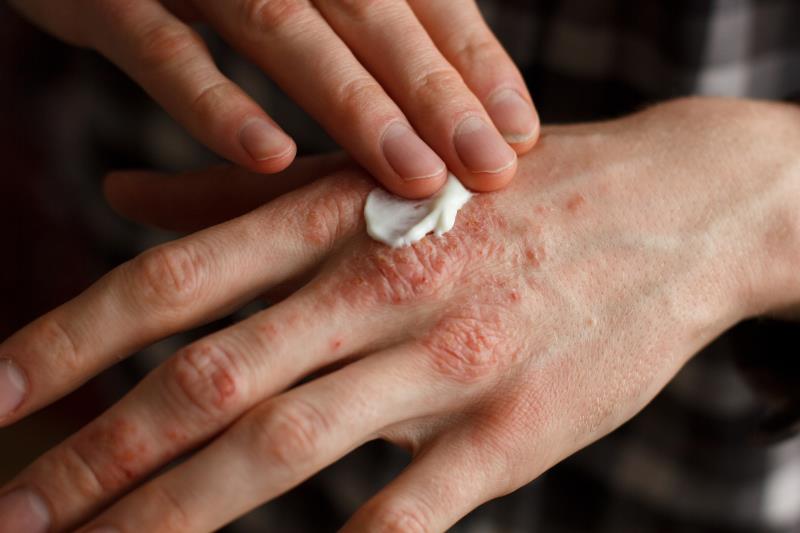
Both adalimumab and phototherapy increase overall and skin-related quality of life (QoL) in psoriasis patients, although phototherapy appears to be better, a recent study has shown.
Researchers randomly assigned 97 psoriasis patients to receive phototherapy (n=33; mean age, 42.0±14.0 years; 69.7 percent male), adalimumab (n=33; mean age, 44.2±14.0 years; 72.7 percent male) or placebo (n=31; mean age, 44.3±14.5 years; 60.5 percent male). QoL outcomes were measured every 4 weeks using the Dermatology Life Quality Index (DLQI) and the three-level version of the five-dimension EuroQol (EQ-5D-3L) tool.
At baseline, the mean DLQI scores in the placebo, adalimumab and phototherapy arms were 12.13, 13.67 and 12.79, respectively. Corresponding scores in the EQ-5D index were 0.80, 0.78 and 0.72. After 12 weeks, statistically significant improvements in skin-related health-related QoL were reported in all groups.
However, both the adalimumab (difference, –3.80, 95 percent CI, –7.64 to 0.04) and phototherapy (difference, –4.80, –8.67 to –0.93) interventions produced significantly greater change relative to placebo.
Similarly, both adalimumab- (odds ratio [OR], 2.88, 1.02–8.17) and phototherapy-treated patients (OR, 8.83, 2.47–31.57) were significantly more likely to reach clinically meaningful improvement, as assessed by DLQI, than their placebo-treated counterparts.
Phototherapy was also more likely than adalimumab to elicit changes that achieved the minimal clinically important difference, although falling short of statistical significance (OR, 3.07, 0.85–11.13).
Both active treatments similarly outperformed placebo in terms of generic health-related QoL, inducing significantly greater improvements in EQ-5D-3L scores by week 12.